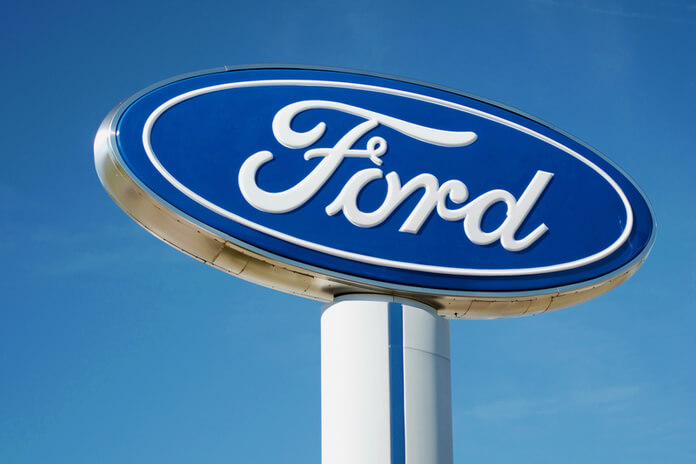After a difficult six months, Ford (NYSE:F) seems to be coming back. Interest has previously been expressed in Ford (NYSE:F), which begins with CEO Jim Farley’s clear vision and plans for the ICE (Internal Combustion Engine) to BEV (Battery Electric Vehicle) transition. It is difficult to comprehend why Ford’s share price has fallen from $25 at the beginning of the year to its current level of $12.73. However, it reflects general anxiety regarding the automotive industry and the ICE to BEV transition.
The recent sentiment (last 30 days) is exceptionally bullish, with 13 buys (2 strong buys and 11 buys), five holds, and no sells (1 strong sell, one sell). Eleven out of twenty-two Wall Street ratings are “hold,” but the “buy” sentiment (3 buy, five strong buy) still outweighs the “sell” sentiment (2 sell, one strong sell). It is believed the outlook for Ford’s stock is optimistic despite the recent decline in its share price. Here is why.
Recent Six Months
In the past six months, the share price of Ford (NYSE:F) has declined by 41% due to supply chain issues (primarily chip shortages). In addition, there have been teething issues with the BEV Mustang Mach-E battery, necessitating an over-the-air software patch for 48,924 vehicles and a delay in the delivery of new vehicles.
Preparing for a Transition
Jim Farley, the company’s chief executive officer, has made it abundantly clear that handling the transition away from ICE production is a formidable challenge. Ford’s recent decision to separate the ICE and BEV segments of its business was partly motivated by the fact that each element faces unique challenges and plays a distinct role.
The BEV industry focuses on innovation and designing a new vehicle architecture from the ground up. In the first instance, the emphasis is placed on a handful of iconic models. The ICE business is a short to a medium-term cash cow, and the focus will be on maximizing cash flow even as the business is gradually dismantled.
Today, Bloomberg predicted as many as 8,000 salaried layoffs in the Ford (NYSE:F) Blue (‘ICE’) division, the majority of which would affect the company’s 31,000 US employees. According to Bloomberg, the situation is changing, and this will be a significant step in reducing costs by $3 billion by 2026. Ford (NYSE:F) Blue is intended to be the cash cow that supports the Model-e, BEV division, regardless of the job cuts.
The layoffs are in part, management’s response to the 41% decline in share price in the past six months. Ford’s share price decline exceeds the decline in the automotive industry as a whole, and Ford (NYSE:F) admits that it has an excessive number of employees.
Ford F-150 Lightning
Ford (NYSE:F) aims to make its mark on the BEV market with the F-150 Lightning, which is undoubtedly the BEV model it has chosen. The F-150 Lightning is equipped with two electric motors and an all-wheel drive. Two battery options are available: 131 kWh (range of 320 miles) or 98 kWh (230-mile range). The F-150 Lightning can power your home for approximately three days.
The model with the larger battery has a towing capacity of 10,000 pounds. Although there seems to be some competition with the GMC (NYSE:GM) Hummer EV and Rivian (NASDAQ:RIVN) releases, they are priced differently (higher). Tesla’s (NASDAQ:TSLA) focus on expanding its manufacturing base, scaling up battery production, and driving the scale-up of its current Model 3 and Y is fortunate for Ford (NYSE:F), as it delays the release of Tesla’s (NASDAQ:TSLA) Cybertruck.
The larger context, including Ford’s battery production
Ford (NYSE:F) plans to invest $50 billion by 2026 to establish its BEV business and produce 2 million BEVs annually. Ford’s BEV sales in 2021 were only 27,140 units, making this a reasonably steep hill to climb. Initial sales of the F-150 Lightning have increased by double digits, and annual sales are expected to reach 200,000 units. If the F-150 Lightning is as famous as predicted by CEO Jim Farley, annual sales of 200,000 units will only be the beginning.
Ford’s joint venture with the South Korean battery manufacturer SK On Co, BlueOval SK LLC, has been finalized to generate at least 60 GWh of battery capacity each year in the United States. This is part of the JV’s plan to produce 129 GWh of manufacturing capability in the United States by 2025, when mass production begins. This is essential to their Model-e BEV business development. Ford (NYSE:F) and SK On Co also have international plans involving the production of 30-45 GWh of batteries in Turkey for commercial vehicles.
Conclusion
The stock market never sleeps, and even the best companies’ fortunes fluctuate like the tide. As wheeled transportation becomes electrified, we are in the early stages of a once-in-a-century transition. This implies significant uncertainty. It is evident that not all (or even the majority?) ICE manufacturers will successfully transition to BEV production. It is a significant transition, and there is a multitude of new companies with no history of ICE production from which to transition. Tesla is unquestionably the dominant player, and this will almost certainly continue, but there is ample room for other manufacturers.
Numerous Chinese BEV makers are emerging, whereas other ICE manufacturers are transitioning. BYD (SHE:002594) appears poised to emerge as a major victor in the BEV transition. Volkswagen (ETR:VOW3) is emerging as the company in Europe with the most. invested in the BEV transition. After a period of denial, both (NYSE:GM) and Ford (NYSE:F) in the United States have now clearly defined their electrified futures. Each company has a CEO who is committed to the transition. Jim Farley, Ford’s CEO, has articulated both a major BEV initiative and the beginnings of an exit strategy for the company’s internal combustion engine (ICE) business.
Featured Image: Megapixl © Lindaparton















